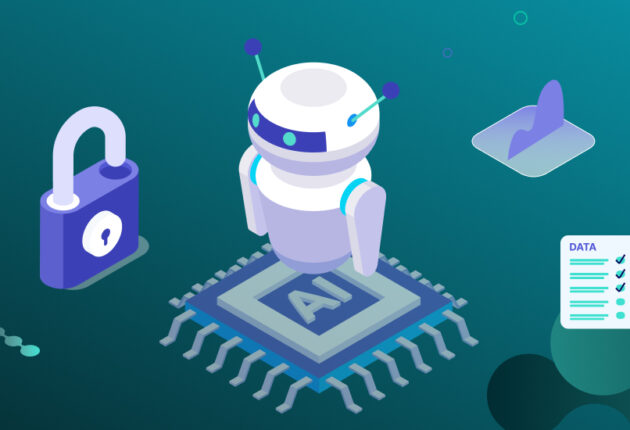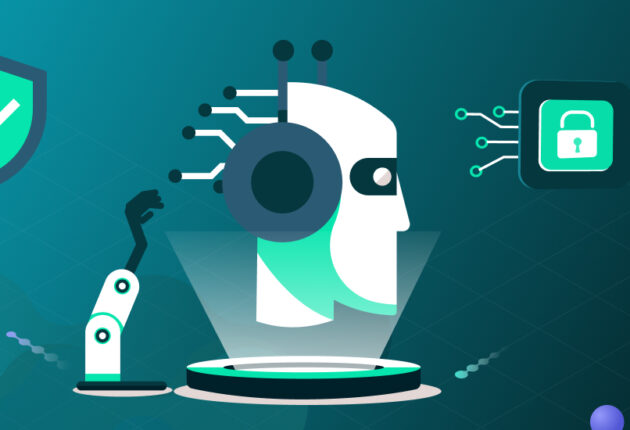In the realm of artificial intelligence and machine learning, fine-tuning Large Language Models (LLMs) has become a common practice to improve model performance for specific tasks. However, amidst the benefits lie significant concerns regarding data privacy. This blog post discusses the intricacies of maximizing data privacy while fine-tuning LLMs, addressing the associated risks and presenting effective strategies, with a focus on the pivotal role of differential privacy.
In this article:
- Understanding fine-tuning LLMs
- Data privacy risks when fine-tuning LLMs
- How to address privacy risks
- Real-life examples
- Conclusion
Understanding Fine-Tuning LLMs
What is fine-tuning LLMs?
Fine-tuning LLMs entails adapting pre-trained language models, like GPT (Generative Pre-trained Transformer), to specialized tasks by further training them on task-specific data. It begins with a pre-trained LLM, such as GPT-3 or BERT, and updates the model based on a smaller, task-specific dataset. This dataset is meticulously selected to align with the targeted application, ensuring the model comprehends the nuances of the domain. For example, a healthcare organization might fine-tune a pre-trained LLM to enhance medical text generation capabilities. This approach enables professionals to customize advanced pre-trained models to meet specific requirements, such as sentiment analysis, named entity recognition, and language translation.1
Fine-tuning offers clear advantages by capitalizing on the existing knowledge within pre-trained LLMs, thereby saving time and computational resources compared to training a model from scratch. Moreover, it facilitates domain-specific expertise, such as in healthcare or finance, leading to enhanced accuracy and tailored interactions. This makes it an indispensable tool for businesses and industries reliant on specialized language models.2
There are three main approaches to fine-tuning3:
- Self-supervised learning: this type of fine-tuning involves training the model on a dataset without labels, allowing the model to learn from the data itself. This is useful when there is a large amount of unlabeled data but limited labeled data.
- Supervised learning: in supervised learning, the model is fine-tuned on a labeled dataset, where the input and output are both known. This allows the model to learn the relationship between the input and output, improving its performance on specific tasks.
- Reinforcement learning: reinforcement learning involves training the model to make decisions based on feedback from the environment. The model learns to take actions that maximize a reward signal, allowing it to learn complex behaviors and strategies.
These approaches are not mutually exclusive, and a combination can be used to achieve optimal results.4
When fine-tuning LLMs, it is important to avoid common pitfalls such as overfitting, underfitting, catastrophic forgetting, and data leakage. These pitfalls can lead to suboptimal performance or even failure of the model. To avoid these pitfalls, it is important to carefully select the training data, monitor the model’s performance, and adjust the hyperparameters as needed.
Fine-tuning LLMs’ applications
Fine-tuning LLMs has numerous applications in natural language processing (NLP), such as5:
- Sentiment analysis: fine-tuning a pre-trained LLM on a dataset specific to sentiment analysis allows the model to better understand and predict the sentiment of a given text. It is often used in social media monitoring, customer feedback, and market research. For example, sentiment analysis can be used to analyze customer reviews of a product or service to determine overall customer satisfaction.
- Question answering: by fine-tuning a pre-trained LLM on a question-answering dataset, the model can be adapted to provide accurate answers to specific questions. It is often used in virtual assistants, chatbots, and search engines. For example, a question-answering system can be used to answer questions about a company’s products or services or to provide information about a specific topic.
- Language translation: fine-tuning a pre-trained LLM on a parallel corpus of sentences in two languages enables the model to translate text from one language to another. It is often used in multilingual websites, chatbots, and communication systems. For example, a language translation system can translate a website from English to Spanish or a chat conversation between two people who speak different languages.
- Named entity recognition: fine-tuning a pre-trained LLM on a dataset containing named entities (e.g., people, organizations, and locations) allows the model to identify and categorize these entities in text.
- Chatbots and virtual assistants: fine-tuning a pre-trained LLM on a dataset specific to conversational contexts can improve the performance of chatbots and virtual assistants, making them more engaging and responsive.
An illustrative example of fine-tuning LLMs is showcased in the case study of refining GPT-3 for legal document analysis.6 Legal texts abound with intricate language and specialized terminology, posing challenges for language models. By fine-tuning GPT-3 on a legal dataset, the model can better grasp legal jargon and context, enhancing its performance on legal tasks.
Another notable approach is intermediate-task fine-tuning, wherein the model undergoes fine-tuning on an intermediate task before proceeding to the final task. This sequential fine-tuning process aids in progressively refining the model’s knowledge, leading to improved performance on the ultimate task.
These advancements in fine-tuning LLMs carry significant implications across various industries. For instance, in healthcare, fine-tuned models can contribute to drug discovery and disease diagnosis. In finance, LLMs can assist in market prediction. In education, they can act as personalized tutors, catering to individual learning styles. As models continue to evolve, effective fine-tuning will play an increasingly pivotal role in harnessing their full potential.
Data Peace Of Mind
PVML provides a secure foundation that allows you to push the boundaries.

Data privacy risks in fine-tuning LLMs
However, fine-tuning also presents challenges, such as data privacy violations. In fact, these models are trained on large datasets, which may include sensitive information. When fine-tuning an LLM on a private dataset, there is a risk that the data could be exposed to arbitrary users, potentially revealing confidential information.7
Output privacy is a key concern in LLMs. These models are designed to complete sentences based on a corpus of data, such as Wikipedia. When prompted with a sentence, the LLM predicts the most statistically likely word to follow based on its training data. However, if sensitive information is included in the training data, there is a risk that the LLM could regurgitate confidential information when prompted with a specific sentence.8 For example, Samsung employees sent confidential data, such as source code, to OpenAI’s ChatGPT to help with their work. Unfortunately, OpenAI’s model learned the data by heart during its fine-tuning period, and external users reportedly managed to make ChatGPT reveal Samsung’s confidential data.9
In particular, fine-tuning LLM models presents several data privacy risks that organizations and researchers must consider:
- Data exposure: Fine-tuning requires access to potentially sensitive data, which could include personal information, proprietary documents, or confidential records. Data exposure can happen when data is sent to a third-party AI provider for training, and if the provider’s systems are compromised, the data could be at risk of being exposed.
- Model memorization: There’s a risk that the model may memorize specific data points during fine-tuning, potentially compromising privacy if the model is deployed in a public or semi-public setting. For example, an external attacker or benevolent user could prompt the LLM with a sentence that contains sensitive information, such as a credit card number, and the LLM might fill it with a real person’s credit card number if it was included in the training data.
- Adversarial attacks: Fine-tuned models are susceptible to adversarial attacks, where adversaries exploit vulnerabilities to extract sensitive information from the model (see also our article AI Re-identification Attacks).
- Membership inference: is a type of attack where an attacker tries to determine whether a particular data point was used in the training set of an LLM. This can be used to infer sensitive information about individuals, such as their medical history or financial information.
Organizations that fail to protect sensitive data during the fine-tuning process can face legal consequences such as fines, penalties, and legal actions from affected individuals or regulatory bodies. For instance, in the European Union, the General Data Protection Regulation (GDPR) imposes strict data protection rules, and organizations that fail to comply with these rules can face significant fines.10
Additionally, privacy breaches can also lead to reputational damage and loss of customer trust. Organizations that fail to protect sensitive data during the fine-tuning process can face public backlash, negative media coverage, and loss of customer trust. This can result in a decline in business and revenue, as customers may choose to take their business elsewhere due to concerns about data privacy.
How to address privacy risks
Best practices
By adopting these best practices, organizations can minimize the privacy risks associated with fine-tuning LLMs and ensure the confidentiality of sensitive information:
- Differential Privacy is a technique that involves adding noise to the training data to prevent the model from memorizing sensitive data. This can help reduce the risk of privacy breaches.
- Adoption of other Privacy Preserving Technologies (PPT): by implementing PPT, organizations can mitigate risks and ensure the confidentiality of personal and sensitive information.11
- Ethical review: an ethical review can help evaluate and mitigate biases in the fine-tuning data. This can help ensure fairness and restrict the amplification of data biases.
- Minimizing sensitive data exposure: during the fine-tuning process, it is essential to minimize the sensitive data shared with the LLM provider. This can help reduce the risk of privacy breaches.
- Cross-validation is a technique that involves dividing the training data into multiple subsets and training the model on each subset. This can help ensure that the model is not overfitting to the training data, which can reduce the risk of privacy breaches.
- Monitoring and auditing the fine-tuning process can help detect and prevent privacy breaches. This can help ensure that the model is not overfitting to the training data or memorizing sensitive data.
How does differential privacy work in the context of fine-tuning LLMs?
In the context of fine-tuning LLMs, differential privacy aims to protect the privacy of the training data by making it difficult for an adversary to extract or reconstruct the exact training samples from the model. By adding noise to the training data or model parameters, differential privacy ensures that individual data points cannot be distinguished, providing privacy guarantees and regulatory compliance. Differential privacy provides:12
- Protection of sensitive information: it can help prevent the inadvertent exposure of sensitive data during fine-tuning, as it adds noise to the training data or model parameters, making it difficult for an attacker to distinguish individual data points.
- Privacy guarantees: it provides a formal mathematical framework for quantifying the level of privacy protection, ensuring that the risk of privacy breaches is minimized.
- Regulatory compliance: by implementing differential privacy, organizations can demonstrate compliance with data privacy regulations such as GDPR and CCPA, reducing the risk of regulatory fines and reputational damage.
- Trust and transparency: it helps build trust with customers and stakeholders by ensuring that sensitive data is protected during fine-tuning, enhancing transparency and accountability.
A real-life example of using DP to fine-tune LLMs
A real-life example of using Differential Privacy to fine-tune Large Language Models (LLMs) can be seen when a healthcare organization may fine-tune a pre-trained LLM to improve medical text generation capabilities while ensuring patient data privacy.13
In this case, the organization can apply differential privacy techniques during fine-tuning to add controlled noise to the training data or model parameters. By incorporating differential privacy, the organization can protect sensitive patient information from being memorized by the LLM, reducing the risk of data exposure or privacy breaches. This approach allows the healthcare organization to leverage the power of LLMs for medical text generation tasks while upholding strict privacy standards.
By implementing differential privacy during the fine-tuning of LLMs in healthcare settings, organizations can strike a balance between utilizing advanced AI capabilities and safeguarding patient privacy. This real-life application demonstrates how DP can be instrumental in enhancing the utility of LLMs while maintaining the confidentiality of sensitive data.
Conclusion
Safeguarding data privacy in fine-tuning LLMs is essential to uphold ethical standards and maintain trust in artificial intelligence technologies. By understanding the inherent risks and adopting proactive strategies such as differential privacy, anonymization techniques, and controlled access mechanisms, organizations can strike a balance between model performance and data privacy protection. As the field of AI continues to evolve, prioritizing data privacy will be paramount to ensure responsible and ethical AI development.
By adopting a proactive approach to data privacy in fine-tuning LLMs, we can pave the way for a more secure and ethical AI landscape where innovation thrives without compromising individual privacy.
2 Super Annotate, “Fine tuning LLM,” 5 February 2024,https://www.superannotate.com/blog/llm-fine-tuning
3 Id as Note 2
4 Each type of fine-tuning has its own advantages and disadvantages, and the choice of fine-tuning method depends on the specific task and the available data.
5 Id as Note 2
6 Scribble Data, “Fine tuning-LLM, ”https://www.scribbledata.io/blog/fine-tuning-large-language-models/
7 Daniel Huynh, “Deep dive privacy risks of LLM,” 20 September 2023, DEV, https://dev.to/mithrilsecurity/deep-dive-privacy-risks-of-fine-tuning-5cj6
8 Id as Note 7
9 Id as Note 7
10 Anjalee Perera, “Fine tuning LLM,” 15 January, Salus, https://www.saluslabs.ai/post/fine-tuning-llms
11 Some privacy-preserving techniques that can be used for fine-tuning Large Language Models (LLMs) include:
- DP-Stochastic Gradient Descent (DP-SGD): DP-SGD is an algorithm that combines the principles of differential privacy with the training of deep learning models. It adds noise to gradient updates during fine-tuning, allowing for model customization without exposing sensitive data.
- Data augmentation: Data augmentation involves creating new training data by modifying existing data, which can help reduce the reliance on sensitive data and minimize privacy risks during fine-tuning.
- Redaction and anonymization: Redacting and anonymizing sensitive data from the training set can help prevent the model from memorizing individual data points, thereby enhancing privacy protection.
- Encryption-based techniques: Using encryption-based techniques can help protect data during fine-tuning, especially in large-scale cloud computations where privacy risks are prevalent.
- Software compositions: Leveraging software compositions can enhance privacy protection during fine-tuning by ensuring that data is processed securely and confidentially.
12 Cem Dilmegani, “Differential Privacy,” 12 January, Ai Multiple, https://research.aimultiple.com/differential-privacy/
13 Rouzbeh Bhenia et Al., “Privately fine tuning LLM,” 20 March 2023, Cornell University, https://arxiv.org/abs/2210.15042










